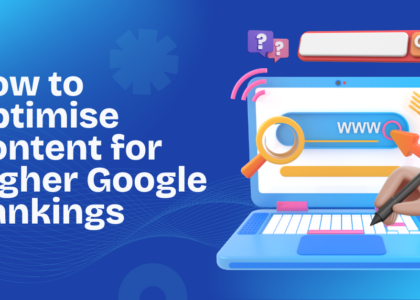If you’ve ever Googled your business name and found nothing—or worse, a competitor—you’re not alone. Building a website is one thing, but getting it noticed in the vast ocean of the internet is not much easier That’s where SEO (Search Engine Optimization) comes in.
Whether you’re launching your first blog, managing a small business site, or just starting in digital marketing, this guide will walk you through the essential steps to rank your website from scratch. No jargon. No fluff. Just clear, actionable advice. You can also follow our page Marketing Tips for extra information.
What is SEO, and Why Does It Matter?
SEO is the process of optimizing your website to increase its visibility when people search for relevant topics on Google, Bing, or other search engines. The better your SEO, the higher your site appears in search results—and the more visitors you’ll attract.
Think of SEO as the difference between setting up shop in the middle of Times Square vs. an alleyway with no signs. Visibility is everything.
Step 1: Understand Your Audience and Their Search Intent
Before you start writing content or tweaking code, get to know your audience:
- What are they searching for?
- What problems are they trying to solve?
- What words or phrases do they use?
Use tools like Google’s Keyword Planner, AnswerThePublic etc. to uncover popular search terms in your niche. Look for keywords with:
- High search volume
- Low to medium competition
- Clear intent (informational, navigational, or transactional)
Step 2: Choose the Right Keywords
Let’s say you’re running a fitness blog. Instead of targeting a broad keyword like “workout,” go for something more specific like “10-minute home workouts for beginners.”
These are called long-tail keywords, and they’re gold for beginners because they’re easier to rank for and often more aligned with user intent.
Step 3: Optimize Your Website Structure
Search engines love clean, well-organized websites. Here’s how to structure yours:
- Fast Loading Speed: Use tools like Google PageSpeed Insights to test and improve speed.
- Mobile Responsiveness: Your site must look and function well on all devices.
- Clear Navigation: Use a simple menu structure with internal links to key pages.
- Secure Your Site: Make sure your website uses HTTPS.
Step 4: Create High-Quality, Valuable Content
Content is still king in SEO. But not just any content—valuable, original, and user-focused content that answers questions and solves problems.
Tips:
- Write blog posts that go in-depth on topics.
- Use headings (H1, H2, H3) to organize your content.
- Add images, videos, and infographics to enhance engagement.
- Include your target keyword naturally—don’t overstuff it.
Step 5: Master On-Page SEO Basics
For every page or blog post, make sure you:
- Use your target keyword in the title tag, URL, meta description, and first 100 words.
- Add alt text to images for accessibility and SEO.
- Link to other relevant pages on your site (internal linking).
- Link to credible external sources where appropriate.
Step 6: Build Backlinks (The Right Way)
Backlinks—when other websites link to yours—are one of Google’s top ranking factors.
To build them:
- Create content worth linking to (think: guides, data, original insights).
- Reach out to bloggers, journalists, or site owners in your industry.
- Get listed in local directories and industry-specific sites.
- Guest post on reputable blogs.
Avoid shady link schemes or paid backlinks—Google will penalize you.
Step 7: Track, Test, and Improve
SEO isn’t set-and-forget. Use tools like:
- Google Analytics – to track traffic, bounce rates, and user behavior.
- Google Search Console – to monitor rankings, keyword performance, and site issues.
Look at what’s working—and what’s not. Optimize old content, update outdated info, and keep creating value.
Bonus Tips for Faster Growth
- Add a blog to your site—it gives you more chances to rank for different keywords.
- Use social media to amplify your content.
- Start an email list early—email marketing and SEO go hand in hand.
Conclusion: SEO Success Starts with Small Steps
Ranking your website might feel overwhelming at first, but every expert started somewhere. SEO for beginners is all about laying a solid foundation: understanding your audience, creating useful content, and optimizing your site step by step.
Stay consistent, keep learning, and watch your efforts turn into visibility—and results. And if this article is informative to you don’t forget to follow us.







